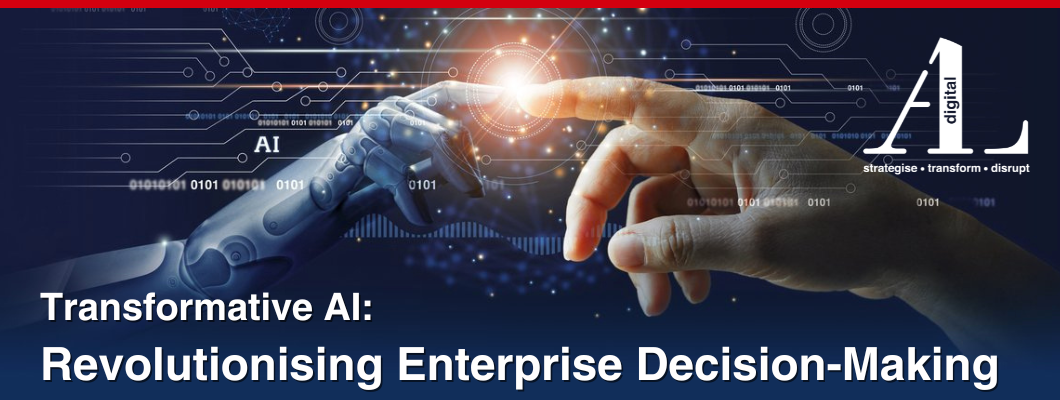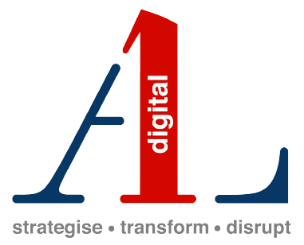
Revolutionising Enterprise Decision-Making
Revolutionising Enterprise Decision-Making
Our article delves into how we harness AI, particularly Large Language Models (LLM), to elevate A1L Digital’s Enterprise Architecture (EA) services. We've conducted comprehensive research, including Oracle AI certification and Udemy courses, to understand LLM, embedding, and language chain. A notable Proof of Concept (POC) involves an EA Bot utilising embedding techniques to enhance data management, decision-making, and multi-channel accessibility. The successful integration of AI in our EA services showcases its potential to revolutionise enterprise management, emphasising our commitment to helping businesses unlock the transformative value of AI.
Enterprise Architecture Services & AI
In the realm of Enterprise Architecture (EA) services,A1L Digital extends our expertise from establishing EA practices to bringing EA to life through 'EA in Action.' Over the past few years, there has been a significant emphasis on digital transformation across diverse sectors. This heightened focus is driven by the imperative for businesses to stay at the forefront of the digital era, meeting customer expectations for exceptional service across numerous digital channels.
In response to this digital shift, our 'EA in Action' service has proven instrumental in aiding companies through their digital transformation journey. This particular facet of EA services concentrates on pivotal aspects such as digital strategy formulation, the integration of digital twins (fusing EA with operational data), and activating seamless customer journeys. Recognising the evolving landscape, we've dedicated the last six months to in-depth research on Artificial Intelligence (AI), particularly Large Language Models (LLM), exploring ways to seamlessly integrate them to amplify the effectiveness of our EA services, with a particular focus on our 'EA in Action' offerings.
Research
Our research initiative has comprehensively explored the dynamic intersection between Artificial Intelligence (AI) and Enterprise Architecture (EA). To bolster our understanding, we've pursued Oracle AI certification and engaged in a series of Udemy courses, delving into key areas such as Large Language Models (LLM), Embedding, and Language Chain.
This knowledge acquisition has empowered us to embark on practical applications, leading us to conduct several Proof of Concepts (POCs) to unravel the potential of LLM within the enterprise environment. The insights gained have been instrumental in shaping our approach to seamlessly integrate AI, particularly LLM, into our EA Services.
In essence, our research endeavours not only signify a commitment to staying at the forefront of AI advancements but also underscore our practical integration of these technologies to enhance the delivery and efficiency of our Enterprise Architecture Services.
Proof of Concepts (POCs): RFP Evaluation Bot
To streamline and enhance the RFP evaluation processes, A1L Digital conducted a Proof of Concept (POC) centred around easing the decision-making on which vendor to select by importing Request for Proposal (RFP) requirements and responses from vendors into a Vector Database. This initiative leveraged advanced embedding techniques to fortify the RFP Evaluation Bot, a sophisticated tool designed to facilitate the comparison of vendor responses against specified requirements.
Key Highlights of the POC:
Data Import: RFP requirements and responses from multiple vendors were systematically imported into a Vector Database, creating a centralised repository. One challenge was getting the data in the correct structure to minimise hallucination.
Embedding Techniques: Employing state-of-the-art embedding techniques, we encoded the textual content of RFP requirements and vendor responses. This step was crucial in transforming textual information into numerical vectors, enabling efficient computational analysis.
RFP Evaluation Bot: The embedded data served as the foundation for the RFP Evaluation Bot. This AI-driven bot was designed to prompt comparisons between vendor responses and RFP requirements, focusing on three key dimensions:
· Functional Fit: Assessing how well vendors meet the specified functional requirements.
· Technical Fit: Evaluating the technical alignment of vendor solutions with the outlined criteria.
· Commercials: Analysing the commercial aspects of vendor proposals against predefined benchmarks.
Decision Support: The system generated insights and recommendations to support decision-making. It offered a holistic view of vendor capabilities, aiding in selecting the most suitable partner for the given requirements.
Benefits of the POC:
Efficiency Gains: Automating the evaluation process significantly reduced manual efforts and accelerated the overall RFP assessment timeline.
Objective Comparison: Using AI for evaluation ensured an objective and standardised comparison across vendors, minimising biases and enhancing the reliability of the decision-making process.
Data-Driven Insights: The POC provided actionable insights, enabling stakeholders to make informed decisions based on quantitative assessments of functional, technical, and commercial aspects.
Proof of Concept (POC): EA Bot for Enhanced Enterprise Architecture Management
Our recent endeavour focused on developing an Enterprise Architecture (EA) Bot, a powerful tool designed to optimise and augment the management of enterprise assets and especially the application landscape. This POC specifically involved exporting data from the EA Tool, in this case, Abacus Avolution, into a Vector Database using advanced embedding techniques.
Key Highlights of the POC:
Data Export and Embedding: Data from the EA Tool (@Abacus Avolution) was seamlessly exported into a Vector Database, enabling the transformation of textual information into numerical vectors through embedding techniques. Since a significant portion of Enterprise Architecture (EA) data is presented in tabular format, several iterations were necessary to organise the data into the correct structure. This iterative process aimed to minimise instances of hallucination and ensure accurate representation.
Application Understanding and Retirement Marking: The EA Bot demonstrated its ability to provide a comprehensive understanding of applications, including identifying those marked for retirement. This functionality is crucial for strategic planning, ensuring a proactive approach to application lifecycle management.
Integration Insights: The EA Bot excelled in providing insights into application integrations, which is especially valuable when planning replacements. Understanding the interconnectedness of applications is essential for minimising disruptions during transitions.
Automated Decommissioning Information: An intriguing aspect of the POC was the automated addition of decommissioning reasons & dates when prompted about applications marked for decommissioning.
Sourcing Model Suggestions: The EA Bot showcased its capability to offer suggestions on the addition of properties and values related to the sourcing model for applications.
CRM System Comparison: The EA Bot demonstrated its versatility by comparing the CRM system captured in the repository with one of the leading CRM systems, Salesforce. This functionality is valuable for organisations considering BSS transformations.
Multi-Channel Exposure Currently in progress, we are extending the EA Bot's accessibility over numerous channels. This enhancement makes the EA Bot's capabilities readily available across diverse communication platforms, ensuring widespread usability.
Benefits of the POC:
Enhanced Decision Support: The EA Bot provides valuable insights for informed decision-making regarding application lifecycle management, integrations, and capabilities.
Automation for Efficiency: Automated additions of decommissioning reasons and property suggestions streamline data management processes, improving efficiency and accuracy.
Versatility Across Channels: The extension of the EA Bot to various channels enhances accessibility, ensuring stakeholders can leverage its capabilities seamlessly.
The success of these POCs marks a significant stride in leveraging AI technologies to augment Enterprise Architecture Services, showcasing the potential for enhanced data management, decision support, and multi-channel accessibility.
Conclusion
In the realm of daily operations, we've harnessed the capabilities of ChatGPT and Bard as invaluable tools. These AI-powered resources play a pivotal role in assisting us in crafting responses to Requests for Proposals (RFPs) and refining the maturity of our EA Services. Additionally, our journey involves leveraging OpenAI and Co-Pilot to expedite the development process while extracting valuable information from our EA Tools.
In conclusion, the Proof of Concept (POC) surrounding our EA Bot underscores the transformative potential of Artificial Intelligence (AI) in revolutionising enterprise management. The seamless integration of AI, through embedding and advanced analysis, has empowered our EA Bot to provide nuanced insights into the application landscape, facilitate strategic decision-making, and enhance the overall efficiency of enterprise architecture management. As AI enthusiasts and practitioners, we are eagerly looking forward to the continued evolution of these technologies to drive even greater value for businesses. The journey of exploring, implementing, and extending AI capabilities within our Enterprise Architecture Services is a testament to our commitment to catalyse positive change and usher in a new era of intelligent decision support for enterprises.
